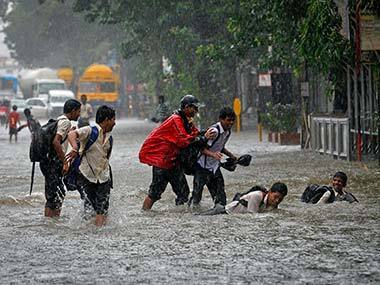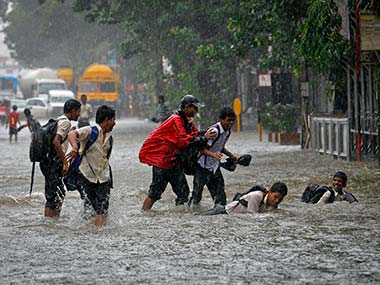The world is moving ahead fast. One could say, at near supersonic speed. The announcement of the Hyperloop, which can transport people from place to place at almost the speed of sound, or in 45 minutes from San Francisco to Los Angeles, testifies to that eventuality. (See
this BBC video
about how it could work.) The system
could be cheaper
than building a train link, to carry some seven million people a year along the US West Coast. There is no need to be bemused and call it science fiction. The idea of the Hyperloop has come from Elon Musk who has turned science fiction into reality with PayPal. Haven’t we often seen the weirdest but wonderful things in sci-fi movies come to life later? Like the touchscreen. Now, there is another. A jetpack, which you could strap yourself on to, and just fly, and use a pair of joysticks to take-off, steer yourself in flight and land. A New Zealand company, Martin Aircraft has already received flight permits to test fly the contraption which is inspired by television series of the yesteryears, Thunderbirds and Lost in Space. It is designed by Glen Martin and
could be available
the market in a year. It is for everyday use. [caption id=“attachment_1036171” align=“alignleft” width=“380”] Image used for representational purposes. Reuters[/caption] Now, come closer to home, to be precise to Mumbai, the country’s premier city. People pack themselves, to use a cliché, like sardines in the commuter coaches, for intra-metro travel. Even if the trains are speeded up ever so often and the capacity increased occasionally it is still inadequate. The curse is the numbers. The sheer overcrowding of the city’s every nook and cranny, and the extended suburbs which pour people into the island region for their livelihoods. And compared to Musk’s idea and the near realisation of Martin Aircraft’s project, we are in the Stone Age. We – or at least the city government — does not know how to even build and maintain roads. Building roads, the world had shown long, long ago, is no rocket science. One excavates the stretch, lays rubble, compacts it, runs heavy road rollers over it, and then a layer of sand and bitumen is laid. That, of course, is in layman terms. Some refinements, no doubt, are involved and have to be done done in a specific manner. These roads, when laid, are to last for a while, say 3-4 years before the maintenance contractors step in and ensure it is as good as it was when laid. One would think, it would be a simple routine. But no! A judge of the Bombay High Court writes to the Chief Justice about the bad roads, more potholes than riding surface. The court takes cognisance and summons the chief executives of all providers of infrastructure – Mumbai, Thane, and Navi Mumbai municipal commissioners, the MMRDA and MSRDC top brass and asks them, why can’t the city have good roads?
At the first hearing
they tried to pass the buck, as it were. As the headline in the Times of India says, the view is devastating for the service providers who collect taxes from the citizens: Road plans good only on paper: HC. A person knows that he has reached the civic areas the moment roads give way to potholes. Why is it so, the judges asked, pointing out that ‘All of us want proper roads’. Citizens have been screaming for something similar year after year, and fear the onset of the monsoon because even the newly built roads are filled with craters in no time. Since it is early days yet in the hearing of the matter, more searching questions are likely to emerge from the judges. They have already asked, how is it that civic bodies maintain this infrastructure well everywhere else in the world? What did the judges hear? One civic chief said there was no proper documentation of underground utilities, and that there was no coordination between the utilities who apparently just dig up the roads. So how is it that craters emerge even on flyovers where there are no utilities under the road surface? An official averred the asphalt does not stabilise due to rains because the drainage is poor. The newspaper helpfully carried a box, Punching holes in arguments. One is already recounted, about utilities. The other is about quality of roads was being monitored by third party auditors. The counterpoint was that the third party audits have already pointed out how the thickness of roads laid have been about half of the prescribed 180mm. But the city body feels a third party monitoring of the contract tendering process would lead to conflict of interest. Perhaps the keen minds of the judges would soon ask, how is it that the erring contractors, who underbid, and under-execute the roads in specifications, and enable the city’s roads to fill with craters, find themselves favoured by contracts the next time round? This particular hearing is good for the cities – Mira-Bhayander and Vasai-Virar have been added as parties by the court themselves – which have so far not heard citizen’s complaints and newspaper headlines which damned their style of functioning. If all else fails the Martin Aircraft personal jet packs may be the answer to the city’s road woes.
Image used for representational purposes. Reuters[/caption] Now, come closer to home, to be precise to Mumbai, the country’s premier city. People pack themselves, to use a cliché, like sardines in the commuter coaches, for intra-metro travel. Even if the trains are speeded up ever so often and the capacity increased occasionally it is still inadequate. The curse is the numbers. The sheer overcrowding of the city’s every nook and cranny, and the extended suburbs which pour people into the island region for their livelihoods. And compared to Musk’s idea and the near realisation of Martin Aircraft’s project, we are in the Stone Age. We – or at least the city government — does not know how to even build and maintain roads. Building roads, the world had shown long, long ago, is no rocket science. One excavates the stretch, lays rubble, compacts it, runs heavy road rollers over it, and then a layer of sand and bitumen is laid. That, of course, is in layman terms. Some refinements, no doubt, are involved and have to be done done in a specific manner. These roads, when laid, are to last for a while, say 3-4 years before the maintenance contractors step in and ensure it is as good as it was when laid. One would think, it would be a simple routine. But no! A judge of the Bombay High Court writes to the Chief Justice about the bad roads, more potholes than riding surface. The court takes cognisance and summons the chief executives of all providers of infrastructure – Mumbai, Thane, and Navi Mumbai municipal commissioners, the MMRDA and MSRDC top brass and asks them, why can’t the city have good roads?
At the first hearing
they tried to pass the buck, as it were. As the headline in the Times of India says, the view is devastating for the service providers who collect taxes from the citizens: Road plans good only on paper: HC. A person knows that he has reached the civic areas the moment roads give way to potholes. Why is it so, the judges asked, pointing out that ‘All of us want proper roads’. Citizens have been screaming for something similar year after year, and fear the onset of the monsoon because even the newly built roads are filled with craters in no time. Since it is early days yet in the hearing of the matter, more searching questions are likely to emerge from the judges. They have already asked, how is it that civic bodies maintain this infrastructure well everywhere else in the world? What did the judges hear? One civic chief said there was no proper documentation of underground utilities, and that there was no coordination between the utilities who apparently just dig up the roads. So how is it that craters emerge even on flyovers where there are no utilities under the road surface? An official averred the asphalt does not stabilise due to rains because the drainage is poor. The newspaper helpfully carried a box, Punching holes in arguments. One is already recounted, about utilities. The other is about quality of roads was being monitored by third party auditors. The counterpoint was that the third party audits have already pointed out how the thickness of roads laid have been about half of the prescribed 180mm. But the city body feels a third party monitoring of the contract tendering process would lead to conflict of interest. Perhaps the keen minds of the judges would soon ask, how is it that the erring contractors, who underbid, and under-execute the roads in specifications, and enable the city’s roads to fill with craters, find themselves favoured by contracts the next time round? This particular hearing is good for the cities – Mira-Bhayander and Vasai-Virar have been added as parties by the court themselves – which have so far not heard citizen’s complaints and newspaper headlines which damned their style of functioning. If all else fails the Martin Aircraft personal jet packs may be the answer to the city’s road woes.
Mahesh Vijapurkar likes to take a worm’s eye-view of issues – that is, from the common man’s perspective. He was a journalist with The Indian Express and then The Hindu and now potters around with human development and urban issues.
)